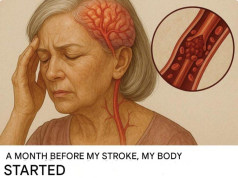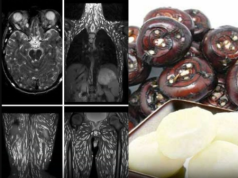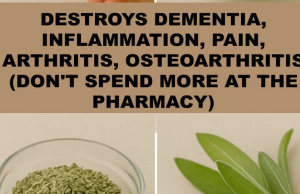Sugar tastes sweet — but its long-term effects on the body can be anything but.
From cakes and chocolates to sodas and breakfast cereals, added sugar hides in nearly 75% of packaged foods — often under sneaky names like high-fructose corn syrup, maltose, or cane juice. And while a treat now and then is perfectly fine, chronic overconsumption can silently damage your health — long before you realize it.
The World Health Organization (WHO) recommends limiting added sugar to less than 10% of daily calories — ideally under 5% (about 25 grams or 6 teaspoons for most adults). Yet the average person consumes over 80 grams a day — more than three times the recommended amount.
When sugar floods your system day after day, your body sends warning signals.
You just need to know how to read them.
Here are the most common symptoms of excess sugar in the human body — and what you can do to reverse the damage.
1. Constant Cravings and Energy Crashes
The Cycle:
Sugar → Blood sugar spike → Insulin surge → Blood sugar crash → Fatigue → Cravings → More sugar.
This rollercoaster is one of the first signs your body is overloaded with sugar.
✅ Symptoms:
- Afternoon energy slumps
- Needing caffeine to stay alert
- Intense sugar cravings, especially after meals
👉 What’s happening: Your cells become resistant to insulin, leading to unstable energy levels.
2. Unexplained Weight Gain — Especially Around the Belly
Excess sugar — especially fructose — is converted by the liver into fat, often stored around the abdominal organs.
This visceral fat isn’t just unsightly — it’s dangerous, increasing the risk of heart disease, diabetes, and inflammation.
✅ Signs:
- Expanding waistline despite dieting
- Clothes fitting tighter around the midsection
- Difficulty losing weight
3. Acne and Premature Skin Aging
Sugar ages you — inside and out.
Through a process called glycation, sugar molecules bind to collagen and elastin — the proteins that keep your skin firm and youthful.
This leads to:
- Wrinkles and fine lines
- Dull, sagging skin
- Increased acne breakouts (due to inflammation and hormonal swings)
✅ Fun fact: Diets high in sugar are linked to worse acne severity — even more than greasy foods.
4. Frequent Urination and Excessive Thirst
When blood sugar levels rise, your kidneys work overtime to filter out the excess.
This pulls fluid from your tissues — leading to:
- Constant thirst
- Frequent trips to the bathroom
- Dry mouth and skin
👉 These are classic signs of insulin resistance — a precursor to type 2 diabetes.
5. Brain Fog and Mood Swings
Sugar doesn’t just affect your body — it messes with your mind.
High sugar intake is linked to:
- Difficulty concentrating
- Memory problems
- Anxiety and irritability
- Increased risk of depression
Studies show that high-sugar diets can impair brain function and shrink the hippocampus — the area responsible for memory and learning.
6. Fatigue That Won’t Go Away
Even after a full night’s sleep, you feel drained.
Why?
Chronic sugar intake causes inflammation, disrupts sleep quality, and stresses the adrenal system.
✅ Red flag: You’re tired all the time — even when you’re not physically active.
7. Increased Risk of Heart Disease
Sugar is a major driver of heart disease — the leading cause of death worldwide.
Too much sugar:
- Raises triglycerides and bad cholesterol (LDL)
- Lowers good cholesterol (HDL)
- Increases blood pressure and inflammation
A 15-year study found that people who get 17–21% of calories from added sugar have a 38% higher risk of dying from heart disease than those at 8%.
8. Joint Pain and Inflammation
Sugar fuels chronic inflammation — a root cause of arthritis and joint pain.
Consuming too much sugar increases inflammatory markers like C-reactive protein (CRP), leading to:
- Stiff, achy joints
- Worsened symptoms of rheumatoid arthritis
- Slower recovery from injury
9. Recurring Infections and Weakened Immunity
You catch every cold that goes around?
Sugar suppresses your immune system — just 10 teaspoons (about 40g) can reduce white blood cell activity by up to 40% for several hours.
This makes you more vulnerable to:
- Colds and flu
- Yeast infections (especially in women)
- Slow wound healing
10. Fatty Liver Disease (Even If You Don’t Drink Alcohol)
Fructose is processed almost entirely in the liver — and too much of it can lead to non-alcoholic fatty liver disease (NAFLD).
This silent condition:
- Causes liver inflammation
- Can progress to scarring (cirrhosis)
- Often has no symptoms until it’s advanced
✅ Alarming stat: NAFLD affects 1 in 3 adults — and sugar is a major culprit.
Where Is Sugar Hiding?
You don’t have to eat dessert to consume too much sugar.
Common hidden sources include:
- Breakfast cereals and granola bars
- Flavored yogurts
- Ketchup, BBQ sauce, and salad dressings
- Bread and packaged snacks
- “Healthy” smoothies and fruit juices
👉 Always read labels. Look for:
- High-fructose corn syrup
- Sucrose, dextrose, maltose
- “Evaporated cane juice,” “fruit concentrate,” or “agave nectar” — they’re all sugar.
How to Reduce Sugar — Without Feeling Deprived
✅ Cut back gradually — don’t go cold turkey
✅ Eat more protein and fiber — they stabilize blood sugar
✅ Choose whole fruits over juices or dried fruit
✅ Drink water or herbal tea instead of soda or sweetened coffee
✅ Satisfy sweet cravings naturally — try cinnamon, vanilla, or dark chocolate (70%+ cocoa)
Final Thoughts: Your Body Is Talking — Are You Listening?
Sugar isn’t evil — but excess sugar is toxic.
The symptoms — fatigue, weight gain, acne, mood swings — aren’t just “part of aging.”
They’re your body’s way of saying:
“I’ve had enough.”
By recognizing these signs early, you can make small, powerful changes that protect your long-term health.
So next time you reach for that sugary snack…
Pause.
Ask yourself:
👉 Is this feeding me — or harming me?
Because the sweetest thing you can do for yourself?
Is to eat less sugar — and live more.
Your body isn’t built for sugar overload. It’s built for balance.










